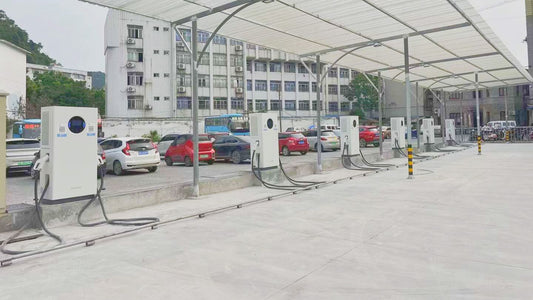What is on board charger?
An onboard charger is a component of an electric vehicle (EV) that is responsible for converting AC power from an external source, such as a charging station or wall outlet, into DC power that can be stored in the vehicle's battery pack.
Unlike a portable charger that you might carry with you, an onboard charger is built directly into the EV and is permanently installed. The charger is typically located near the battery pack and works with the vehicle's power management system to regulate the charging process.
Onboard chargers come in a variety of sizes and power levels, depending on the make and model of the EV. The charging rate is measured in kilowatts (kW) and can range from a few kW to more than 10 kW.
Some modern electric vehicles have the ability to accept high voltage DC charging directly into the battery, bypassing the onboard charger altogether. However, most EVs still rely on an onboard charger to charge their battery packs using AC power.
It's possible that in the future, some EVs may rely on alternative charging methods or technologies that do not require an OBC, but for the time being, most EVs still use an onboard charger to convert AC power into DC power for the battery pack.
Here are some potential pros and cons of the onboard charger (OBC) on an electric vehicle (EV):
Pros of OBC:
Convenience: The OBC allows EV owners to charge their vehicles from any standard electrical outlet or charging station, making it more convenient and accessible than other charging options.
Faster Charging: An OBC can typically charge an EV faster than a portable charger, which can be especially beneficial when you need to quickly top up your battery.
Integration: The OBC is typically integrated into the EV's power management system, which helps to optimize the charging process and ensure that the battery pack is charged safely and efficiently.
Reduced Costs: EV owners with an OBC can take advantage of cheaper off-peak electricity rates, which can result in lower charging costs compared to using public charging stations.
Cons of OBC:
Cost: The cost of an OBC can add to the overall cost of an EV, particularly if it is a high-powered unit that is capable of fast charging.
Limitations: The charging rate of an OBC is limited by the power capacity of the electrical circuit it is connected to, which can result in slower charging times if the circuit is not powerful enough.
Range Anxiety: Despite the convenience of the OBC, the range limitations of EVs can still cause range anxiety for some drivers, particularly if there are limited charging options available in their area.
Dependence on Infrastructure: EVs with OBCs rely on access to charging infrastructure, which can be limited in some areas, particularly in rural or remote regions.
Overall, the OBC is a critical component of an EV, providing convenient and efficient charging options for EV owners. While there may be some limitations and costs associated with the OBC, it remains an essential feature of EV technology.
Trends for on-board chargers for electric vehicles
Higher Power Outputs:
As EV battery capacities continue to increase, there is a growing demand for higher power outputs from OBCs to allow for faster charging times. Many newer EVs are equipped with high-power OBCs that can support fast charging rates of up to 100 kW or more.
Bidirectional Charging:
Bidirectional charging is a technology that allows EVs to not only receive power from an external source but also to supply power back to the grid or to power other devices. OBCs with bidirectional charging capability are becoming increasingly popular, as they enable EVs to serve as a mobile power source, which can be useful in emergencies or in areas with limited electrical infrastructure.
Integration with Vehicle Control Systems:
Many OBCs are now integrated with the vehicle's power management system, which allows for more efficient and effective charging. This integration can optimize the charging process based on factors such as battery temperature and state of charge, resulting in faster and more efficient charging.
Wireless Charging:
Wireless charging is a technology that allows EVs to be charged without physically plugging in a charging cable. OBCs that support wireless charging are becoming more common, and this technology is expected to become more widespread as wireless charging infrastructure becomes more widely available.
Increased Efficiency:
OBCs are becoming more efficient, with newer models boasting efficiency rates of up to 98%. This increased efficiency not only helps to reduce charging times but also helps to reduce overall energy consumption and operating costs.
Overall, these trends suggest that OBCs are becoming more advanced and capable, providing more convenient and efficient charging options for EV owners. As EV adoption continues to grow, it's likely that we will see continued innovation in OBC technology, with even faster charging times, more efficient charging, and new features and capabilities.




